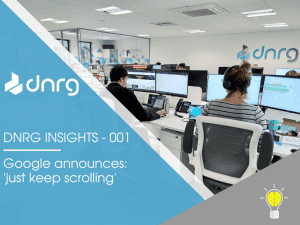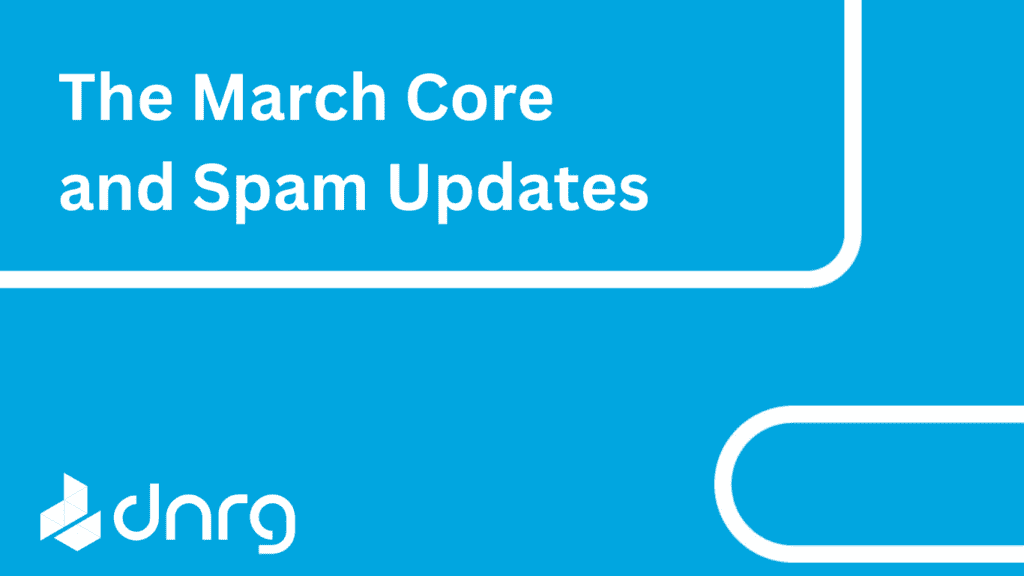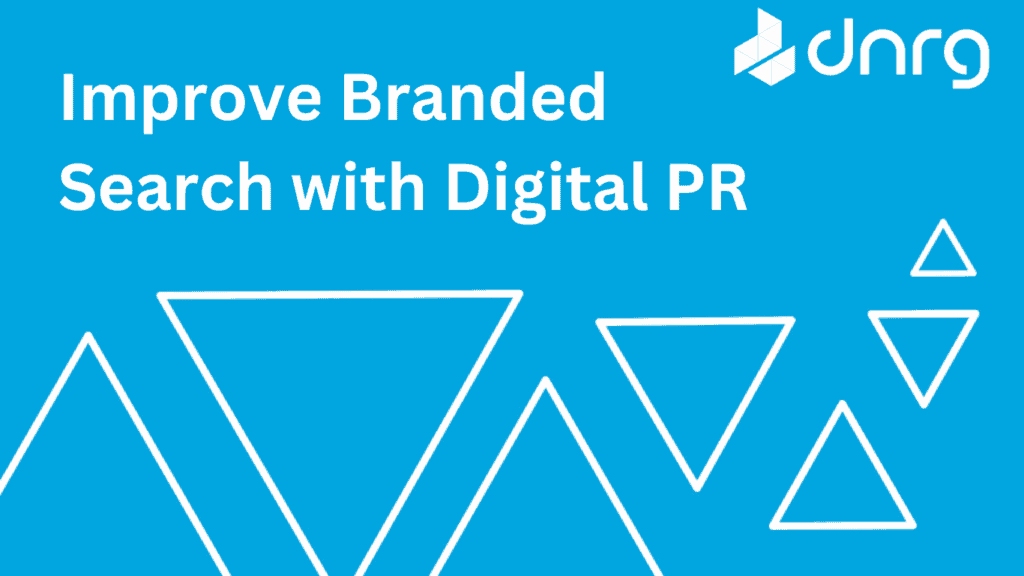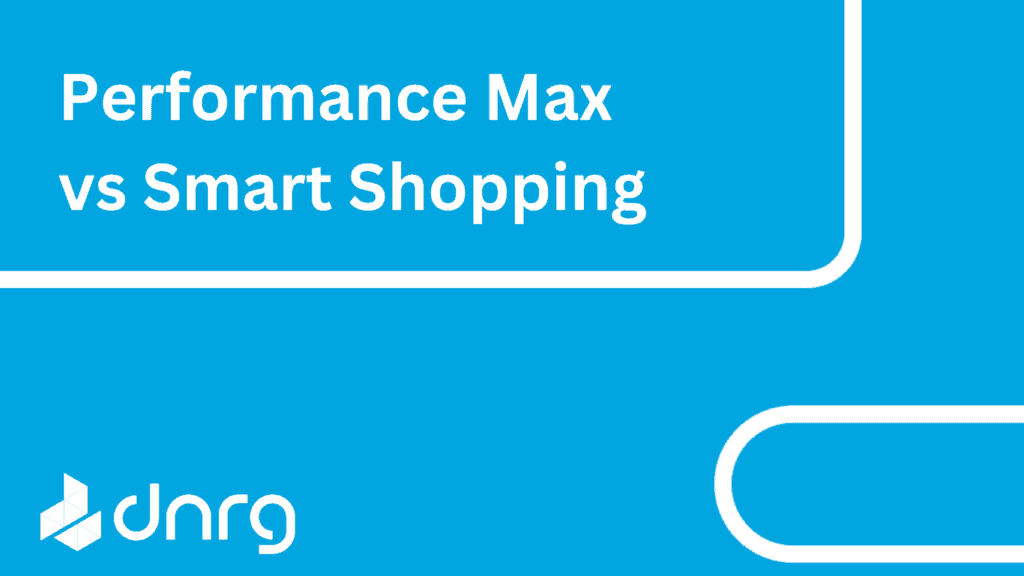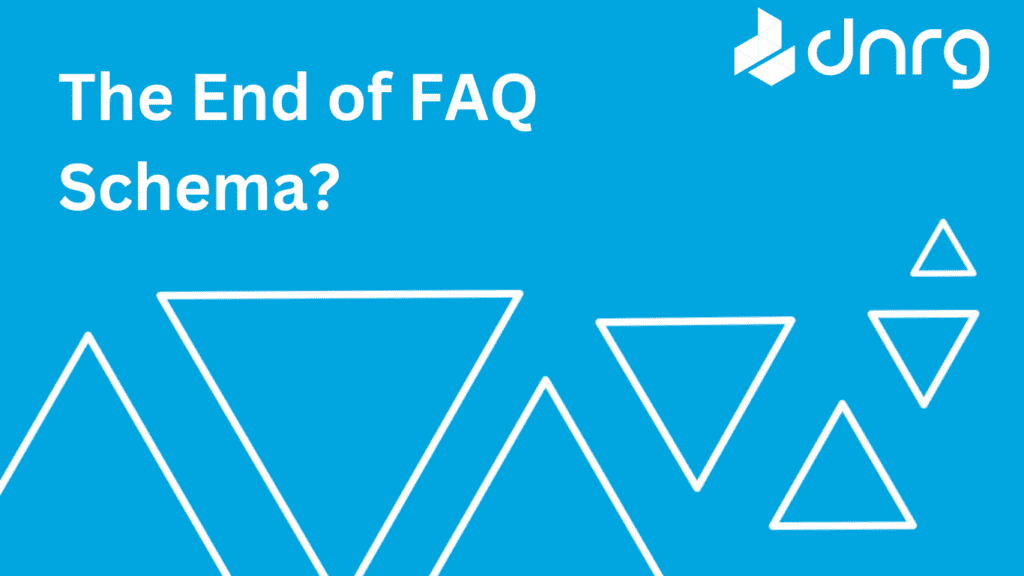Welcome to our newest feature, DNRG Insights. This will be a bi-weekly blog, where we share an interesting development within the digital marketing sphere and ask our specialists to give some insight into how this topic may impact both our clients and ourselves. The first article relates to Google’s introduction of continuous scrolling via mobile devices and how this may affect your SEO and PPC campaigns.
What is the impact of Google’s new continuous scroll feature?
What is the update?
Over the past few months, we have seen Google implement a number of changes that, from a digital marketing perspective, could be highly significant and change the way we develop our digital strategies. One of the more recent changes we think you should be aware of is Google’s introduction of continuous scrolling to mobile devices.
Previously, when you searched for something on Google via a mobile device, you would only be shown the first page of results. If you were unable to find what you were looking for on this first page, Google would then require you to click the ‘see more’ icon, which would allow you to load the next set of results on a separate page.
Not any more. The introduction of continuous scrolling means that now, when you reach the bottom of a search results page, the subsequent page will now automatically load below, allowing you to keep scrolling through. Google says that this function will improve the search experience for those who require additional information about a certain topic, and it should help to modernise the whole process. This will be a staggered rollout, starting in the US, so you may not notice this straight away.
Why does it matter?
Whilst it may make things easier from a user perspective, it may create some new challenges (or opportunities) for digital marketers.
Here’s what our specialists have to say about this new update:
Jack Carey – SEO Manager:
‘From an organic perspective, not much will instantly change as a result of this. The main element that those involved in SEO will be curious about is how this update may affect click-through rates. Where before, ranking outside of the Top 10 was a condemnation to getting zero traffic, this update could well change that view over time.’
‘Some SEO specialists may begin to see value in ranking in positions 10-15 for keywords with exceptionally high search volume (more than 10,000pm). However, given that ranking position 10 is currently worth on average 0.5% of all monthly searches marketers shouldn’t react too quickly to change their SEO strategy because of this update.’
Emily Walton – Paid Media Manager:
‘Currently, PPC holds position 1-4 at the top of the search results pages & also the bottom 4 results typically. With this continuous scroll, those ads are now going to be more seamlessly integrated as part of the search results experience because there’s no obvious boundary of where these ads will show.’
‘Those people who “never click the ads” will be lured in by our hyper-targeted, top-performing ad copies & not have the psychological signals of “it’s at the top or bottom of the page, so, therefore, it’s an ad, so I won’t click it”. However, given the impatience of users, I imagine that they still will not get 3-4 scrolls in before rephrasing their search to get more relevant results to what they’re looking for. So in summary, when this launches in the UK, for our clients we expect to see a slight increase in click volume but not a huge spike on launch.’
Whilst this update is not a cause for sudden concern, marketers should certainly be aware of it, as it is likely to have an impact on both SEO and PPC strategies in the long term.
If you’re looking for help tailoring your digital strategy then please don’t hesitate to get in contact with one of our specialists.
